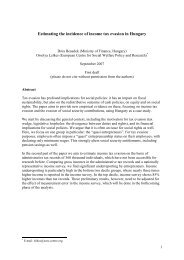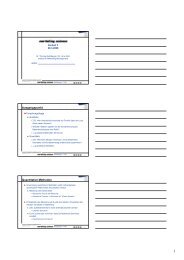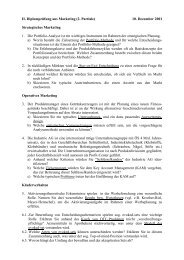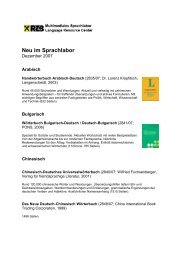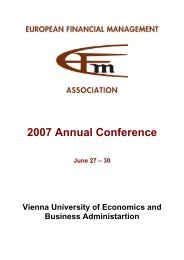Fund liquidation, self-selection and look-ahead bias in the hedge ...
Fund liquidation, self-selection and look-ahead bias in the hedge ...
Fund liquidation, self-selection and look-ahead bias in the hedge ...
You also want an ePaper? Increase the reach of your titles
YUMPU automatically turns print PDFs into web optimized ePapers that Google loves.
Zeckhauser (1997) <strong>and</strong> ter Horst, Nijman <strong>and</strong> Verbeek (2001) such a<br />
<strong>and</strong><br />
could be expla<strong>in</strong>ed by <strong>look</strong>-<strong>ahead</strong> <strong>bias</strong>. If we correct for <strong>look</strong>-<strong>ahead</strong><br />
pattern<br />
<strong>the</strong> expected returns on <strong>the</strong> lower deciles are significantly reduced <strong>and</strong><br />
<strong>bias</strong><br />
J-shape flattens. As a result, <strong>the</strong> relationship between past <strong>and</strong> future<br />
<strong>the</strong><br />
expected returns on a zero<br />
The<br />
portfolio that is long <strong>in</strong> w<strong>in</strong>ners (decile 10) <strong>and</strong> short <strong>in</strong> losers<br />
<strong>in</strong>vestment<br />
with a t-value of −3.11. At <strong>the</strong> bi-quarterly horizon, <strong>the</strong> w<strong>in</strong>nerloser<br />
significant<br />
portfolio has an expected return of 11.9%, <strong>and</strong> <strong>the</strong> correction for <strong>look</strong>-<br />
<strong>bias</strong> has very little impact. Brown, Goetzmann <strong>and</strong> Ibbotson (1999),<br />
<strong>ahead</strong><br />
<strong>and</strong> Naik (2000), <strong>and</strong> Bares, Gibson <strong>and</strong> Gyger (2003), also f<strong>in</strong>d<br />
Agarwal<br />
of a persistence pattern at a short term horizon, while <strong>the</strong> pattern<br />
evidence<br />
less strong at longer horizons. However, note that <strong>the</strong>se studies do not<br />
is<br />
for <strong>look</strong>-<strong>ahead</strong> <strong>bias</strong>, <strong>and</strong> that without corrections, average returns<br />
correct<br />
be overestimated by as much as 7.7% (decile 1, annual horizon). For<br />
may<br />
discussion on correct<strong>in</strong>g for <strong>look</strong>-<strong>ahead</strong> <strong>bias</strong> we refer to Baquero,<br />
additional<br />
Horst <strong>and</strong> Verbeek (2005).<br />
ter<br />
Subsequent period performance<br />
0.2500<br />
0.2000<br />
0.1500<br />
0.1000<br />
0.0500<br />
0.0000<br />
1 2 3 4 5 6 7 8 9 10<br />
Initial period rank<br />
raw returns<br />
corrected returns<br />
double corrected returns<br />
Figure 2: Four-quarterly persistence <strong>in</strong> raw returns.<br />
performance becomes more monotonic.<br />
1), is approximately 10.0% at <strong>the</strong> annual horizon, while it is only 4.3%<br />
(decile<br />
no correction for <strong>look</strong>-<strong>ahead</strong> <strong>bias</strong> is applied. The difference is statistically<br />
if<br />
The most strik<strong>in</strong>g result is that <strong>the</strong> correction for <strong>look</strong>-<strong>ahead</strong> <strong>bias</strong> due to<br />
22



